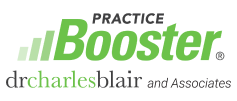You may have noticed that the dental industry is consolidating. Large groups of dental practices and dental service organizations (DSOs) have seen more than 15% growth over the past five years, and aren’t losing any steam. DSOs offer providers the security to provide dentistry to their community while taking most of the business owner duties off of their plates. While there are many pros and cons to the group dentistry model, there is one irrefutable fact: DSOs need dental coding resources.
What is a DSO?
A DSO is a dental service organization and is part of the group dentistry model. The group dentistry model is acquiring dental practices and taking over operations, marketing, and revenue cycle management of those practices. Estimated at $130 billion, the group dentistry model is larger than urgent care, physical therapy, dermatology, and the veterinary space combined.
Popularity and growth in DSOs have been consistent in almost every state across the country. Nevada, Arizona, and Texas are currently the top three states strongly embracing DSOs. It seems DSOs are also trending upward in the midwest, south, and southwest with the northwest and northeast not seeing the same jump in involvement. Interestingly, only Alaska and Montana have little to no DSO involvement.
What are dental coding resources?
CDT codes are the standard dental code set for diagnoses and treatments and are used to report the treatment performed to insurance payors for reimbursement. Dental coding resources are crucial tools that provide the dental team with the knowledge and support to confidently code correctly for the procedures performed, which reduces risk and increases legitimate revenue. They can come in many forms from digital resources to online courses to print guides. Here at Practice Booster, we are proud to offer a wide range of resources to support dental practices with dental coding and administration.
Why do DSOs need dental coding resources?
According to Synergy Specialists, 60% of patients referred out of the dental practice never end up proceeding with specialty care. DSOs have started bringing in traveling specialists and/or have permanent in-house specialists to work alongside general dentists. Depending on the scope of general dentistry services when the dental practice is acquired, the DSO may expand that scope by adding aligners, mini implants, etc. This is appealing in today’s convenience-driven world, and also creates a level of trust and transparency between providers that patients can benefit from.
This presents a revenue cycle management challenge, however. The larger the scope of services, the more likely that one or more of the following will occur:
- An incorrect CDT code will be reported
- Proper CDT codes will be underutilized
- Incorrect coding practices will trigger insurance audits
This means that dental coding resources are just as crucial for DSOs as private dental practices. Not only can they increase legitimate reimbursement that keeps revenue consistent, but they can also increase compliance and reduce risk. These resources can also give DSOs the peace of mind that no matter where the next dental practice purchase occurs, the dental team in that practice will have the dental coding knowledge and support they need to build trust with the community.
Recommended dental coding resources for DSOs
A Practice Booster subscription includes 24/7 access to the most comprehensive CDT coding database.
Dental Coding with Confidence is the industry’s most trusted coding resource, with reader-friendly graphics and terms that dental team members of every experience level can understand. Bundle Dental Coding with Confidence with Dental Administration with Confidence and watch your dental administration team soar!
Email orders@practicebooster.com if you are interested in bulk book orders.


Webmaster
Cool